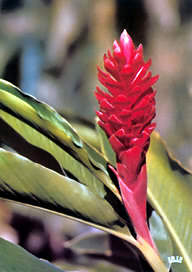 GEOGRAPHY GEOGRAPHY
Cameroon is the cross-radios of Black Africa. It lies at the heart of the Gulf of Guinea and is virtually an inevitable passage between West and Central Africa. The country is roughly shaped like a triangle, its base running along latitude 2° North and its apex extending Lake Chad slightly beyond latitude 13°. Cameroon has a surface area of 475.000 square kilometres. It opens onto the Atlantic Ocean through a 402 Km coastline. It is bounded:
To the West by Nigeria
To the North and East by Chad and the Central African Republic respectively
And to the South by the Congo, Gabon and Equatorial Guinea.
The longest distances are 725 km from East to West in the Southern part of the country and 1,240 km from the banks of lake Chad to the North of the Atlantic coast in the South.
 RELIEF AND HYDROGRAPHY RELIEF AND HYDROGRAPHY
Cameroon has five major natural regions:
The littoral region in the South West; a low-lying coast formed by an ancient platform;
The mountainous region of the West; characterized by former volcanic area; Mont Cameroon with an altitude of 4,095 m is the highest point of the region;
The hilly region of the South and the East: comprising plateaux and hills with an average altitude of 500-800 meters;
The high plateau region of the centre: made up of a complex known as the Adamaoua plateau (1,000 to 1,500 m in altitude).
It is a vast region of plains and savannah, which as one proceeds towards the North-West, gradually gives way to the Lake Chad depression. The Adamaoua mountain-range divides Cameroon into two hydrographic regions:
The South, which comprises the coastal basin and the Congo basin ;
And the North, which is composed of the Niger and Chad basins.
The main rivers of the South region are: the Cross River, the Mungo, the Wouri, the Dibamba, the Sanaga (Cameroon’s longest river, 918 km), the Nyong, the Ntem, the Dja, the Sangha and the Ngoko.
|

The Northern region is watered by River Benoue (an affluent of the Niger), River Logone and River Shari.
 CLIMATE AND VEGETATION CLIMATE AND VEGETATION
The country is divided into two climatic zones:
The Northern Zone: the Maroua region (average of 29°) that has less than one metre of rainfall per year. The Adamaoua region (average of 22°), which is a cooler area because of the altitude of the plateau. The dry season runs from November to April, and the rainy season takes the rest of the year, from May to October.
The Southern Zone: Here, there are three seasons ; the major dry season from November to February ; the minor rainy season from March to June, and the major rainy season from August to October. The coastal area of the Douala region has only one major rainy season (March to October). The average temperature of this zone is 26 °: the climate and altitudinal differences account for the rich and varied vegetation.
From North to South, the vegetation changes from the Sahelian savannah on the banks of Lake Chad, to the grassy plains, the Guinean savannah and, lastly, the dense forest of the South. In the mountainous areas, there are wooded valleys, fem-covered slopes and high plateaux with pastures.
|

